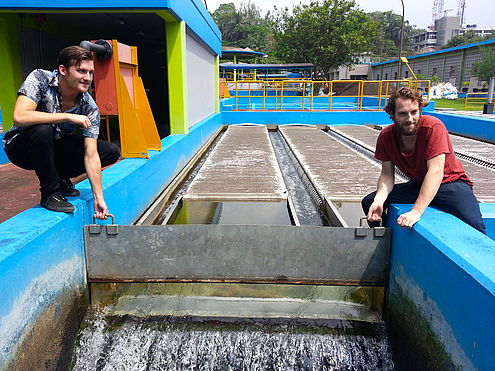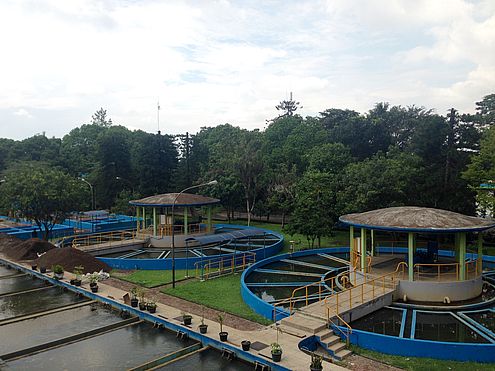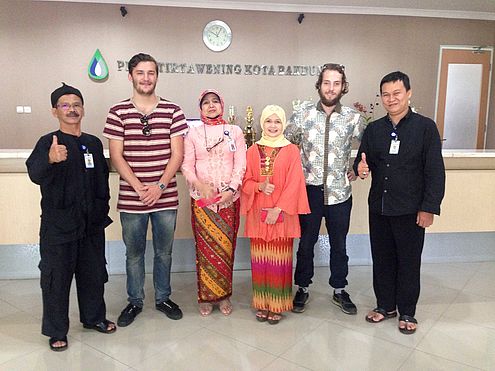PDAM Tirtawening Kota Bandung: Improving the water treatment processes
Improving the water treatment processes
Nicael Jooste & Bas Holman
Since we are both internationally oriented, we wanted to give our bachelor thesis an extra dimension by doing the research abroad. We were lucky enough to receive the Mark van Eekeren fund and realize our plans. Our final choice fell on Indonesia, a country far away from the Netherlands where life is quite different from life back home. We were forced to adjust to living in a different country with a different culture. This was not always easy, but in the end we feel enriched with new experiences that we will carry with us for the rest of our lives.
For our thesis we travelled to Bandung, the capital of West-Java. The centrally located water treatment plant PDAM Tirtawening Kota Bandung is currently not operating optimally. The treatment steps are not able to treat the water properly, resulting in too high turbidities in the system and in the effluent. Since the budget for upgrading is limited, solutions should ideally be effective and cheap. The water treatment plant consists of two parts, an old part built in 1958 and a new part added in 1989. Our research was focused on the new part. The goal of our research was to improve the water treatment processes at PDAM Tirtawening Kota Bandung by evaluating the current process steps of the new part and improving upon them by applying simple adaptations.
After multiple visual inspections in the first week it became apparent that the cause of the treatment inefficiency is not caused by a single large malfunction, but rather by a number of small problems. Due to poor maintenance nearly all metering equipment is malfunctioning or broken. Treatment processes are operated by instincts, guesstimation and trial and error. Jar tests are carried out by external high school students who have no knowledge on the matter, resulting in incorrect coagulant dosages and subsequently poor flocculation and sedimentation. Plastic is found throughout the system. The list of seemingly marginal problems goes on and on.
After pinpointing multiple problems, base turbidity measurements were taken for one week throughout the plant. Multiple adaptations were researched and introduced to the system, which improved the removal of turbidity. It was found that turbidity levels decreased with a whopping 60% just by changing the dosage of coagulant.
Most problems that cause the poor water quality are simply fixed by properly operating the plant and maintaining the equipment. This means that no big investments are needed for the new part of the treatment plant to produce water of good quality. Instead, the staff should be educated on how to operate the plant properly.
At the end of the project we presented and discussed our findings to the director and staff of the water treatment plant. Everybody is very happy with the results and we hope that we have contributed to the improvement of PDAM Tirtawening Kota Bandung. We are very grateful that we were able to travel across the planet to have this invaluable experience. We can wholeheartedly recommend doing a project abroad to anyone who is interested.


